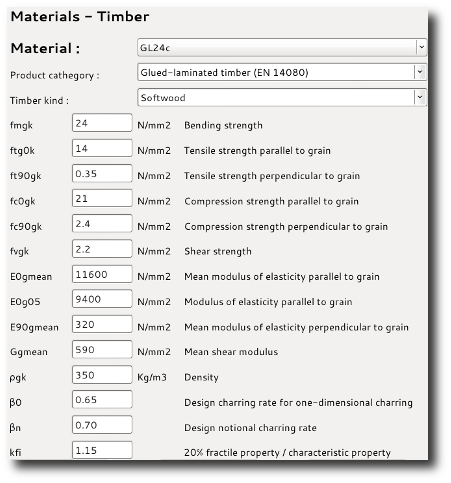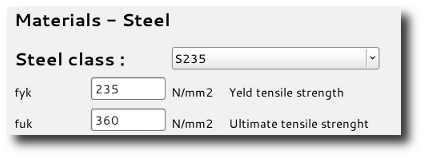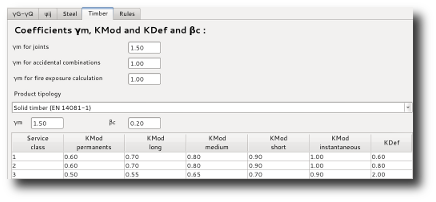Highlights
-
Automatic generation of all load combinations.
Once load's cases and loads have been introduced TimberStruct will generate automatically all load combinations...... -
Partial combination coefficients based on National Annexes.
A comprehensive database of National Annexes allows to associate a different set of Country-dependent factors to each job... -
Ability to print internal forces on any point.
It's possible to instruct TimberStruct application to calculate and include in final printout the internal forces on any number of points inside element...
Timber materials

TimberStruct comes with extensive timber materials, including
all commercial Gluelam types and most Structural timber types.
A dedicated modules allows users to create new materials and modify existing ones, without limitations.
All new materials, besides being stored for future uses, are embedded on the job's file, if used inside it, allowing to
transmit job's files between users without need of separate library sharing.
Al used materials inside a jobs are printed along with their characteristics on final report.
Steel

As for timber materials, a complete and extensible steel materials library is included with TimberStruct,
to be used in joint and reinforcements calculaions.
.
Also this library is easily extensible by the user with a dedicated module of TimberStruct.
Rules

Working in a globalized world, and with the harmonized Community Rules given by Eurocodes, it has become a must
for the Engineer to handle different National Rules' small differences.
Eurocodes, giving an harmonized ruleset for all EU, allow single Countries to define some sets of factors and details;
these details are collected inside National Annexes, the DAN..
TimberStruct provides libraries for National Annexes for some Countries, which can be extended by users.
A dedicated module allows user to change any parameter of each National Annex and/or to define new sets of rules.
Each National Annex contains also a dedicated text pages for Rules references, which will be printed at the beginning
of final report.